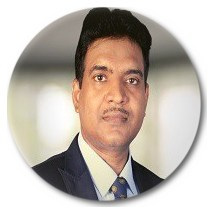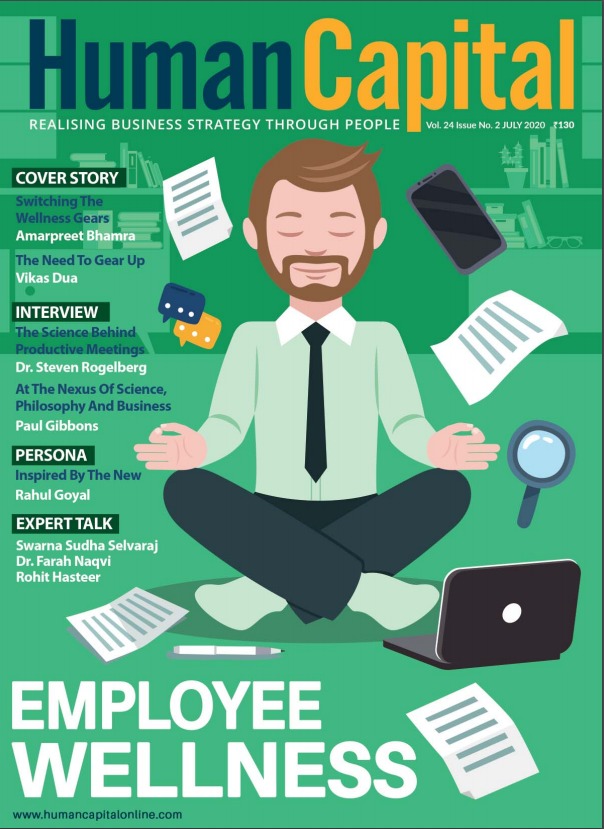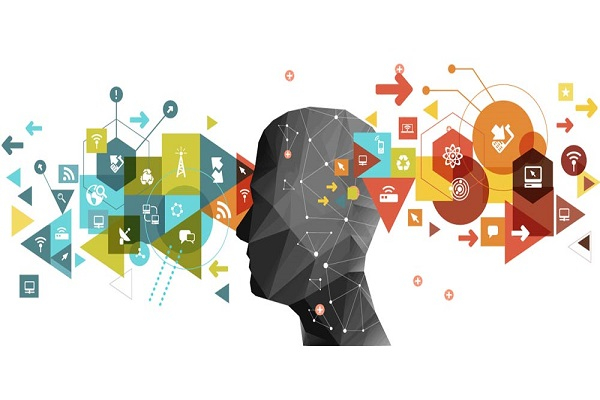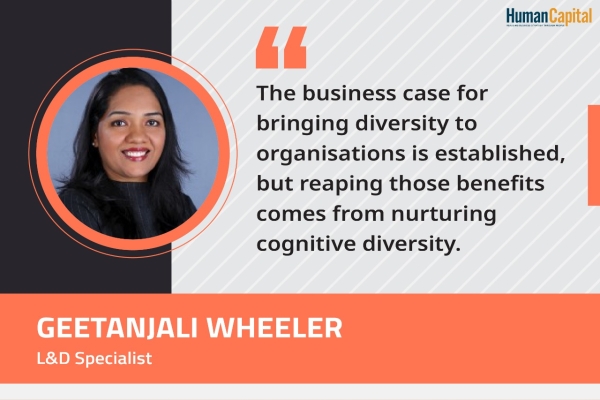The future belongs to those who are ready for it. Have your Chronos, Kairos and actions in place.
While speaking with my peer CHROs on what the future of talent will look like, we all ended up sharing our own version of the future with flying cars, drones at doorsteps delivering medicines, robots as co-workers, AI-powered workplaces, smart homes and many more. Interestingly, what was common was that we all thought human beings would still drive the future.
The future is about the “survival of the smartest”, and many key themes emerged in the conversation. Let me elaborate on these threads below:
Preparing Future Talent to Stay Competitive
• New is next
The next decade will be new in many ways. Post-pandemic VUCA 2.0 will be about technological breakthroughs, newer versions of work, workplaces and workforces, and massive shifts in ways of living amid resource scarcity and climate change challenges. On one end, business demands recovery, digital transformation acceleration, and a reconfigured model to succeed; on the other hand, people at work expect flexibility, want to deliver outcome vs output, want to work with diverse teams and expect continuous learning and career growth.
As per a recent PwC global study on 10,000 people that included India – 37% are worried about automation putting jobs at risk, 74% are ready to learn new skills/ retrain to remain employable, 60% think few people will have stable and long-term jobs in the future, and 73% think technology can never replace the human mind[1]. The above surely gives us a sense of future talent who will be critical for organisational adaptation in order to survive and thrive for sustained growth.
• Talent is not a fixed commodity; it’s fluid and flexible
We have been discussing and hearing a lot about the future of work, workplace and hybrid-working in recent times. It is high time to shift gears to think about future-fit talent. Future-fit talent will strive for organisational success in the new context of a smart workplace, connected-yet-boundaryless marketplace and an unprecedented level of competition in the digitally disruptive world.
• Change is a constant reality
From industrial revolution 1.0 to 4.0, the context of talent and the skillsets and mindsets needed have evolved. We have witnessed a shift in leadership styles from autocratic, participative, and collaborative to inspirational. Future talent will have to meet the requirements of competence, culture and embracing change more frequently, like a non-stop marathon.
• Decoding future-fit (ness)
What are the aspects of future-fit talent? While they vary by industry, the following factors will broadly define the landscape for future-fit talent:
→ The consumer demographics, with their increasing expectations for corporations to perform or perish. They will decide the rules of the game for the industry and talents.
→ A purpose-led organisation and their choices will have significant implications on the talent roadmap.
→ A new world of connectedness will redefine work, workforces, and workplaces.
→ Disruptive technological advancements will determine work and ways of working, forcing talent to stay agile and adaptable.
→ The core values and culture of the organisations will evolve with changing needs over time.
The above indicates the futuristic competencies and capabilities that need to be built, borrowed or bought carefully over the years to create a competitive advantage. The actual intervention starts when HR decodes the strategy and translates that into three major actionable parts relevant to the specific industry.
An Evolving Roadmap to Define, Develop and Retain Future-Fit Talent
• Adopt at the organisational level
→ Define what future-fit talent means for your organisation, keeping in mind the long-term business strategy and its implication in terms of talent and cultural needs.
→ Do a thorough assessment of your talent readiness for the future and identify the gaps that must be filled through re-skilling and up-skilling.
→ Deploy your high potential talent for critical assignments and change management projects to support strategic initiatives.
→ Design and develop your talent via a variety of critical experiences. This can be done internally, through an exchange of talent with other geographies, or in collaboration with partner organisations.
→ Carefully build your employer brand to attract future talent. Go beyond the functional boundary, culture, geography, time zone, etc., to find future-fit talent.
→ Revisit your organisation’s values and culture to unite the future workforce in a hybrid model that embraces diversity, inclusion and belongingness.
• Adopt at a leadership Level
→ Ensure robust communication with the workforce about the needs for new capabilities and ways of working to support business plans and inspire them for re-skilling and up-skilling.
→ Revisit your functional and leadership competency models and fine-tune your career progression and reward model.
→ Consider an aggressive model of futuristic capability building programmes.
→ Build a network of coaching and mentoring talent.
→ Include continuous learning and skill up-gradation as a critical component in your talent reviews and performance management process.
• Adopt at an employee/individual level
→ Consult and engage with leaders/HR on your aspirations and the future capability needs of the organisation to draw up your Individual Development Plan (IDP) for learning and growth.
→ Follow the trends of your industry and the macroenvironment to shape your career path.
→ Cultivate growth, agile and flexible mindsets so that your competence and leadership remain relevant in the future.
→ Build your network of mentors and advisers for career guidance.
→ Continuously upgrade your capabilities needed for future ways of working and career success.
→ Build a long-term partnership with your organisation.
Future-Fit Leaders
Leaders need to embrace humility, flexibility, and agility. The new generation of the workforce is looking for freedom, empowerment, trust, empathy and flexibility in multiple forms. We will need future-fit leaders to work with prospective future-fit employees much more coherently to leverage their potential and keep them engaged. It is going to be challenging but very exciting.
The future is full of possibilities. As Albert Einstein said, “In the middle of difficulty lies opportunity.” The future belongs to those who are ready for it. Have your Chronos, Kairos and actions in place.
References: [1] https://www.pwc.com/gx/en/services/ people-organisation/publications/workforceof-the-future.html

Do you think hybrid work arrangements would be a common feature of the workplaces going forward?
Trending
-
SBI General Insurance Launches Digital Health Campaign
-
CredR Rolls Out 'Life Happens' Leave For Its Employees
-
Meesho Announces 30-Week Gender-Neutral Parental Leave Policy
-
Microsoft Unveils Tech Resilience Curriculum To Foster An Inclusive Future
-
60% Indian Professionals Looking For Job Change Due To COVID: Survey
-
SpringPeople And Siemens Collaborate For Digital Transformation Push
-
86% Professionals Believe Hybrid Work Is Essential For Work Life Balance: Report
-
Almost 1 In Every 3 People's Personal Life Affected Due To Work Stress
-
Meesho Rolls Out Reset And Recharge Policy For Employees
-
80% Of Talent Leaders & Academics Say Pandemic Changed Skill Needs For Youth: Report
-
Hero Electric Rolls Out 'Hero Care' Program For Employees
-
Human Capital In Collaboration With ASSOCHAM Hosts Virtual Conference
-
IKEA India, Tata STRIVE Collaborate To Create Employability And Entrepreneurship Opportunities
-
SAP India, Microsoft Launch Tech Skilling Program for Young Women
-
DXC Technology, NASSCOM Collaborate For Employability Skills Program
-
Lenskart To Hire Over 2000 Employees Across India By 2022
-
Mindtree Launches Learn-and-Earn Program
-
Tata AIA Extends 'Raksha Ka Teeka' To Its Employees
-
Swadesh Behera Is The New CPO Of Titan
-
NetConnect Global Plans To Recruit 5000 Tech Professionals In India
-
Hubhopper Plans To Hire 60% Of Indian Podcasters By 2022
-
Corporate India Needs More Women In Leadership Roles: Report
-
Aon to Invest $30 Million and Create 10,000 Apprenticeships by 2030
-
Tech Mahindra Launches ‘Gift a Career’ Initiative for Upskilling of Youth
-
40% Women Prefer Flexible Working Options in Post-COVID World: Survey
-
3 out of 4 companies believe they can effectively hire employees virtually: Report
-
Vodafone , CGI and NASSCOM Foundation launch digital skills platform
-
Odisha: Bank, postal employees to deliver cash for elderly, differently-abled persons
-
Skill India launches AI-based digital platform for "Skilled Workforce"
-
Hiring activity declines 6.73% in first quarter: Survey
-
70% startups impacted by COVID-19 pandemic
-
Bajaj Allianz Life ropes in Santanu Banerjee as CHRO
-
Over 70 Percent MSMEs look at cutting jobs to sustain businesses
-
93 Per Cent employees stressed about returning to office post-lockdown
-
Johnson & Johnson India announces family benefits for same gender partners
-
Indian firms turning friendly towards working mothers
-
Welspun India names Rajendra Mehta as new CHRO
-
Wipro partners with NASSCOM to launch Future Skills platform



Human Capital is niche media organisation for HR and Corporate. Our aim is to create an outstanding user experience for all our clients, readers, employers and employees through inspiring, industry-leading content pieces in the form of case studies, analysis, expert reports, authored articles and blogs. We cover topics such as talent acquisition, learning and development, diversity and inclusion, leadership, compensation, recruitment and many more.
Subscribe Now












































Comment